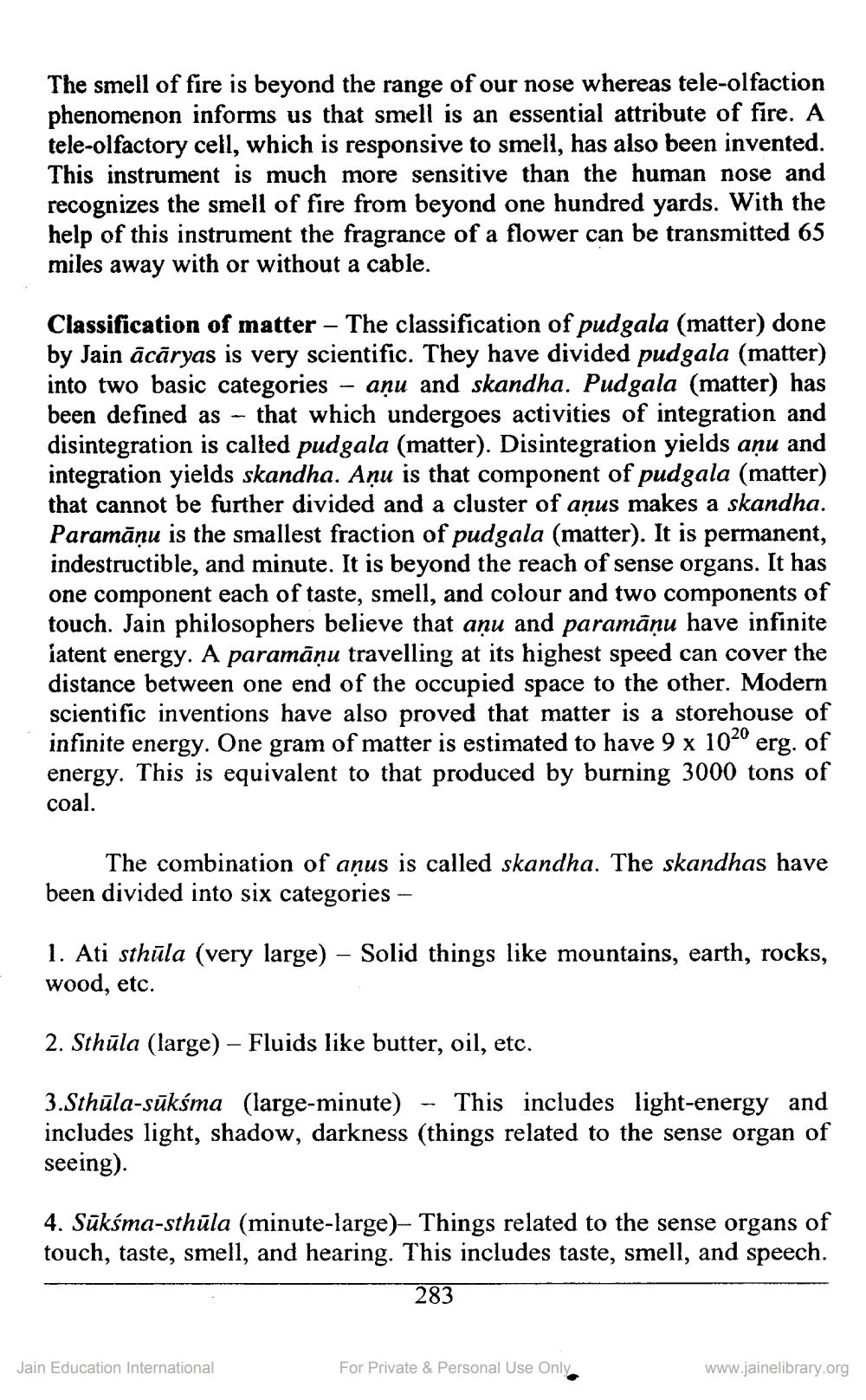________________
The smell of fire is beyond the range of our nose whereas tele-olfaction phenomenon informs us that smell is an essential attribute of fire. A tele-olfactory cell, which is responsive to smell, has also been invented. This instrument is much more sensitive than the human nose and recognizes the smell of fire from beyond one hundred yards. With the help of this instrument the fragrance of a flower can be transmitted 65 miles away with or without a cable.
Classification of matter – The classification of pudgala (matter) done by Jain ācāryas is very scientific. They have divided pudgala (matter) into two basic categories – aņu and skandha. Pudgala (matter) has been defined as - that which undergoes activities of integration and disintegration is called pudgala (matter). Disintegration yields aņu and integration yields skandha. Aņu is that component of pudgala (matter) that cannot be further divided and a cluster of anus makes a skandha. Paramāņu is the smallest fraction of pudgala (matter). It is permanent, indestructible, and minute. It is beyond the reach of sense organs. It has one component each of taste, smell, and colour and two components of touch. Jain philosophers believe that aņu and paramāņu have infinite latent energy. A paramāņu travelling at its highest speed can cover the distance between one end of the occupied space to the other. Modern scientific inventions have also proved that matter is a storehouse of infinite energy. One gram of matter is estimated to have 9 x 1020 erg. of energy. This is equivalent to that produced by burning 3000 tons of coal.
The combination of aņus is called skandha. The skandhas have been divided into six categories -
1. Ati sthūla (very large) - Solid things like mountains, earth, rocks, wood, etc.
2. Sthūla (large) - Fluids like butter, oil, etc.
3.Sthūla-sūkśma (large-minute) - This includes light-energy and includes light, shadow, darkness (things related to the sense organ of seeing).
4. Sūkśma-sthūla (minute-large), Things related to the sense organs of touch, taste, smell, and hearing. This includes taste, smell, and speech.
283
Jain Education International
For Private & Personal Use Only
www.jainelibrary.org




